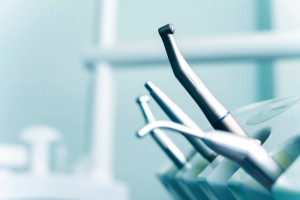What is Sleep Disordered Breathing?
Dentistry has a history of focusing on the hard tissues and teeth primarily.” While this is absolutely an essential component, it is in the soft tissues that lives can be changed!” There is a rapidly emerging awareness of sleep and breathing disorders. Sleep centers are opening at a very rapid rate and more and more patients are aware that snoring may be more than just a nuisance at night. However, even with this increasing awareness, we are significantly behind the times when it comes to sleep. Of those affected, less than 10 percent are diagnosed and of those, less than 10% are managed adequately. And there is a direct correlation between TMD and OSA. They are both diseases of the cranial facial anatomy.
 In fact, the vast majority of the patients being treated are likely being treated less ideally than they could be! The gold standard is CPAP and while it is a powerful and essential tool, it isn’t the stand-alone solution it is being treated as. The CPAP combined with a mandibular advancement appliance allows a dramatic drop in the pressure of the oxygen being used and a dramatic increase in comfort. Currently the success is deemed to be 40% wear at least four nights a week. That means that potentially three nights a week it is less than that or none and in the best night you can be without the CPAP 60% of the time! With issues like OSA you literally stop breathing. Success in medicine is considered to be when you stop breathing no more than 60% of the time!”
In fact, the vast majority of the patients being treated are likely being treated less ideally than they could be! The gold standard is CPAP and while it is a powerful and essential tool, it isn’t the stand-alone solution it is being treated as. The CPAP combined with a mandibular advancement appliance allows a dramatic drop in the pressure of the oxygen being used and a dramatic increase in comfort. Currently the success is deemed to be 40% wear at least four nights a week. That means that potentially three nights a week it is less than that or none and in the best night you can be without the CPAP 60% of the time! With issues like OSA you literally stop breathing. Success in medicine is considered to be when you stop breathing no more than 60% of the time!”
When combined with a well-trained dentist, that patient compliance can be dramatically enhanced! Using an appliance that supports proper soft tissue architecture in the airway will provide the treating physician with optimal support and allow for a markedly improved outcome. However, this isn’t simply making snoring appliances. The importance of Sleep medicine and adequate training cannot be overstated!” If we confine our practices to treating snoring we will see some patients get the snoring treated but leave the OSA alone.” The fact is that OSA can, and in time, will kill patients.”
Every practice is filled with these patients who need their dentists’ help. One in three adult males and one in five adult females is suffering with and dying from OSA. Fortunately they are dying slowly so we have the opportunity to get trained and help! Unfortunately that hasn’t happened yet as there are only 1% of those who are even close to being managed correctly!
Are you prepared to start saving lives? Click here to learn more about LVI’s Sleep Course.



